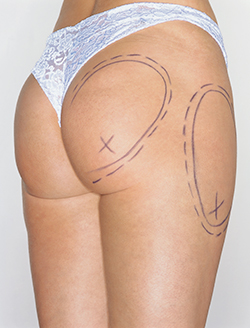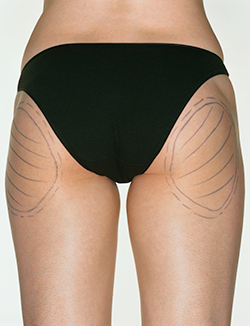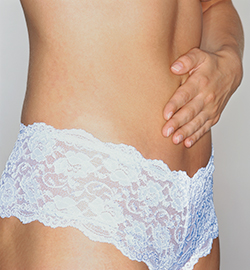Top 5 Body Contouring Procedures After Weight Loss Surgery
-

More than one-third of adults in the U.S. are obese. Each year, close to 200,000 people choose to have bariatric procedures such as gastric bypass or gastric banding to drop their excess weight, according to the American Society for Metabolic & Bariatric Surgery. Bariatric surgery saves lives, but can result in some unwanted physical side effects such as loose skin. For this reason, after bariatric surgery many people decide to have body contouring procedures to get rid of hanging fat and flab that mars their otherwise trim figure. (Most surgeons recommend waiting at least 18 months before having body contouring surgery after dramatic weight loss.)
Here are the five most common plastic surgery procedures that follow weight loss surgery, according to the American Society of Plastic Surgeons (ASPS):
-
1. Lower Body Lift

Lower body lift (belt lipectomy) tightens and sculpts the buttocks, back of the thighs, outer thighs, inner thighs, hips and abdomen. (The scar is hidden in the bikini line.) In 2013, approximately 4,400 people opted for this combination of procedures following massive weight loss, the ASPS reports.
Some people may be tempted to choose this one-and-done surgical approach to body contouring, but combination procedures can also increase risks and recovery time when compared to individual procedures. That said, they might be relatively less expensive as there is only one operating room fee and one anesthesia fee as opposed to multiple ones for multiple procedures.
-
2. Thigh Lift

Thigh lift (thighplasty) after massive weight loss shapes the thighs by reducing excess skin and, sometimes, fat. The result is a more contoured upper leg. In 2013, approximately 4,500 people had thigh lifts after weight loss surgery, the ASPS reports. There are several types of thigh lifts, each of which is tailored to a specific trouble spot(s). Recovery time varies based on the nature of the thigh lift. In general, the incision is in the groin area, extends downward and wraps around the back of the thigh.
-
3. Arm Lift

Arm lifts (brachioplasties) have increased in popularity in recent years. Many credit the tight, trim and toned arms of First Lady Michelle Obama as driving this trend. For people who have lost massive amounts of weight, hanging flab in the arms can prevent them from revealing their trimmer figure in short sleeves or tanks. For these reasons, approximately 5,600 people signed up for arm lifts following weight loss in 2013, the ASPS reports. An arm lift removes excess hanging skin from the underarm and reshapes the under part of the upper arm, from the armpit area to the elbow.
-
4. Breast Lift

Breast lift (mastopexy) — with or without breast implants — is a popular post-weight loss procedure. In 2013 alone, 10,914 women had breast lifts after bariatric surgery. With a dramatic change in weight, the breasts — which are composed largely of fatty tissue — can begin to sag and flatten. A breast lift can return them to a perkier state.
-
5. Tummy Tuck

Tummy tuck (abdominoplasty) is one of the most popular plastic surgery procedures in general, let alone as an after-massive-weight-loss supplement. In 2013, 16,602 people who lost significant amounts of weight chose to have tummy tucks, according to the ASPS.
A tummy tuck removes excess fat and skin, and can restore weakened or separated muscles. Some people who have had weight loss surgery may also need a panniculectomy if they have significant hanging fat and flab (pannus) following weight loss. The pannus may cause skin irritation and infection. Unlike a tummy tuck, a panniculectomy only removes excess skin and fat; it doesn’t tighten the muscles. Ask your surgeon which procedure is best for you.







